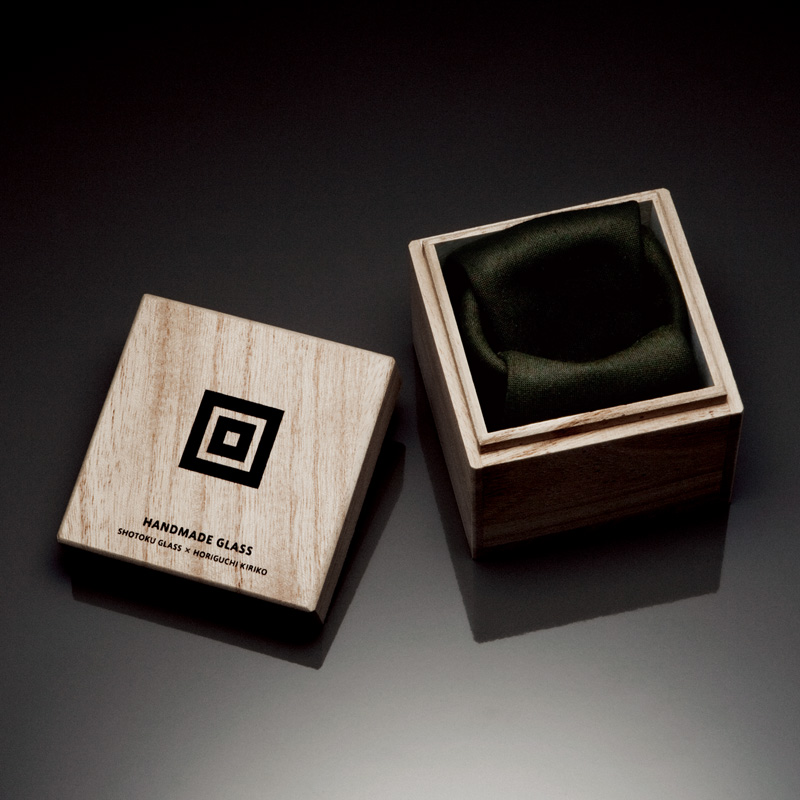Guinomi Kai "Nanako"
Guinomi "Kai" Nanako by Horiguchi Kiriko
2.75"D 2"H 2.7oz
$158 HK03
Horiguchi always imagines how the glass might be used. Once it is in the users hand, they will experience strikingly beautiful views. The fine cuts in this glass reflect the light and create a wide variety of changing perspectives.
“Nanako” means fish eggs and is a typical Edo Kiriko pattern. This is one of the simplest patterns in terms of the shapes, but it presents a stout challenge to the artisan’s skills and techniques due to it’s intricate perfection.
Hand-blown & cut by hand. Lead free crystal.
Made in Japan
*This comes in a beautiful black Kiribako gift box and numbered.
Product and purchase information, contact Japan Suite.
Guinomi "Kai" Nanako by Horiguchi Kiriko
2.75"D 2"H 2.7oz
$158 HK03
Horiguchi always imagines how the glass might be used. Once it is in the users hand, they will experience strikingly beautiful views. The fine cuts in this glass reflect the light and create a wide variety of changing perspectives.
“Nanako” means fish eggs and is a typical Edo Kiriko pattern. This is one of the simplest patterns in terms of the shapes, but it presents a stout challenge to the artisan’s skills and techniques due to it’s intricate perfection.
Hand-blown & cut by hand. Lead free crystal.
Made in Japan
*This comes in a beautiful black Kiribako gift box and numbered.
Product and purchase information, contact Japan Suite.
Guinomi "Kai" Nanako by Horiguchi Kiriko
2.75"D 2"H 2.7oz
$158 HK03
Horiguchi always imagines how the glass might be used. Once it is in the users hand, they will experience strikingly beautiful views. The fine cuts in this glass reflect the light and create a wide variety of changing perspectives.
“Nanako” means fish eggs and is a typical Edo Kiriko pattern. This is one of the simplest patterns in terms of the shapes, but it presents a stout challenge to the artisan’s skills and techniques due to it’s intricate perfection.
Hand-blown & cut by hand. Lead free crystal.
Made in Japan
*This comes in a beautiful black Kiribako gift box and numbered.
Product and purchase information, contact Japan Suite.
Imagine the glass you are about to drink from in the same way you might look at a beautiful precious stone. As you examine it from different angles, bringing the glass to your mouth to drink, you are presented with a new vision, a new beauty as the angles change. Equally important is how that glass feels in your hand. The artisans carrying on the nearly 200-year old tradition of making Edo Kiriko glassware are well aware of this and strive to create beautiful cut-glass items you can use and enjoy every day. Everytime you look at them, you see them a little differently. Toru Horiguchi, whose beautiful works we proudly offer here, is one such artisan carrying on the Edo Kiriko tradition, while also pushing the boundaries. He strives to create glassware that is beautiful and also feels great to use. Edo Kiriko is characterized by its very precise designs and execution. Horiguchi is exploring new realms here—working to incorporate the abstract into the precise. He says his best creations are inspired by everyday things around him, not by thinking too deeply or profoundly.
Japanese cut glass of the Edo Kiriko style originated in 1834 during the late Edo Period when Kyubei Kagaya, inspired by cut glassware brought to Japan by Dutch traders, originated his own cutting techniques by sculpting glass with emery. This was a peaceful period in Japan, and the new style of glass reflected a country at peace. It is considered playful and something beautiful that can be used every day. The use of glass for everyday things gained much greater popularity in the second half of the 19th century as more and more western ideas came to Japan.
Edo Kiriko is characterized by smooth cuts with rounded edges. This creates glassware that sparkles, glints and shows a different side of its beauty depending on where you view it from. The craftspeople who create Edo Kiriko glassware have taken a technique from abroad and developed a type of glassware that has become a distinct part of the Japanese culture.
Horiguchi’s grandfather, Ichio, who took on the pen name Shuseki, was a skilled master of the Edo Kiriko style. He passed the torch to the second Shuseki - Tomio Suda - who trained Toru Horiguchi, the current third Shuseki. “Succession names” like Shuseki hold great honor and importance for those they are bestowed upon. Horiguchi always is conscious of this honor and the responsibility that comes with it. Only the finest creations are allowed the Shuseki brand, signifying their great beauty and quality. We are inspired by Horiguchi’s dedication and the elegant beauty of his creations.
To learn more about featured artist's collection, please contact Japan Suite.












